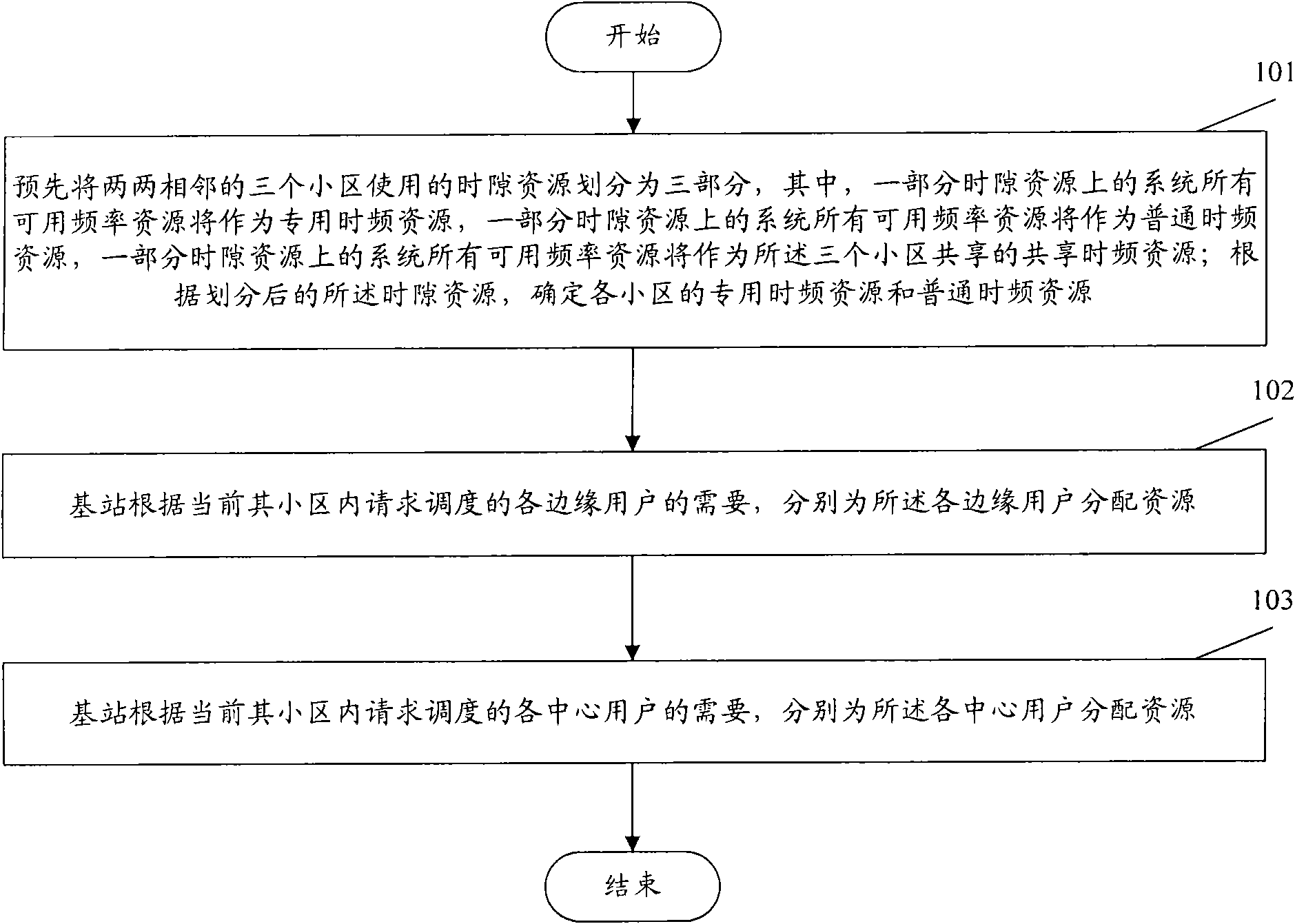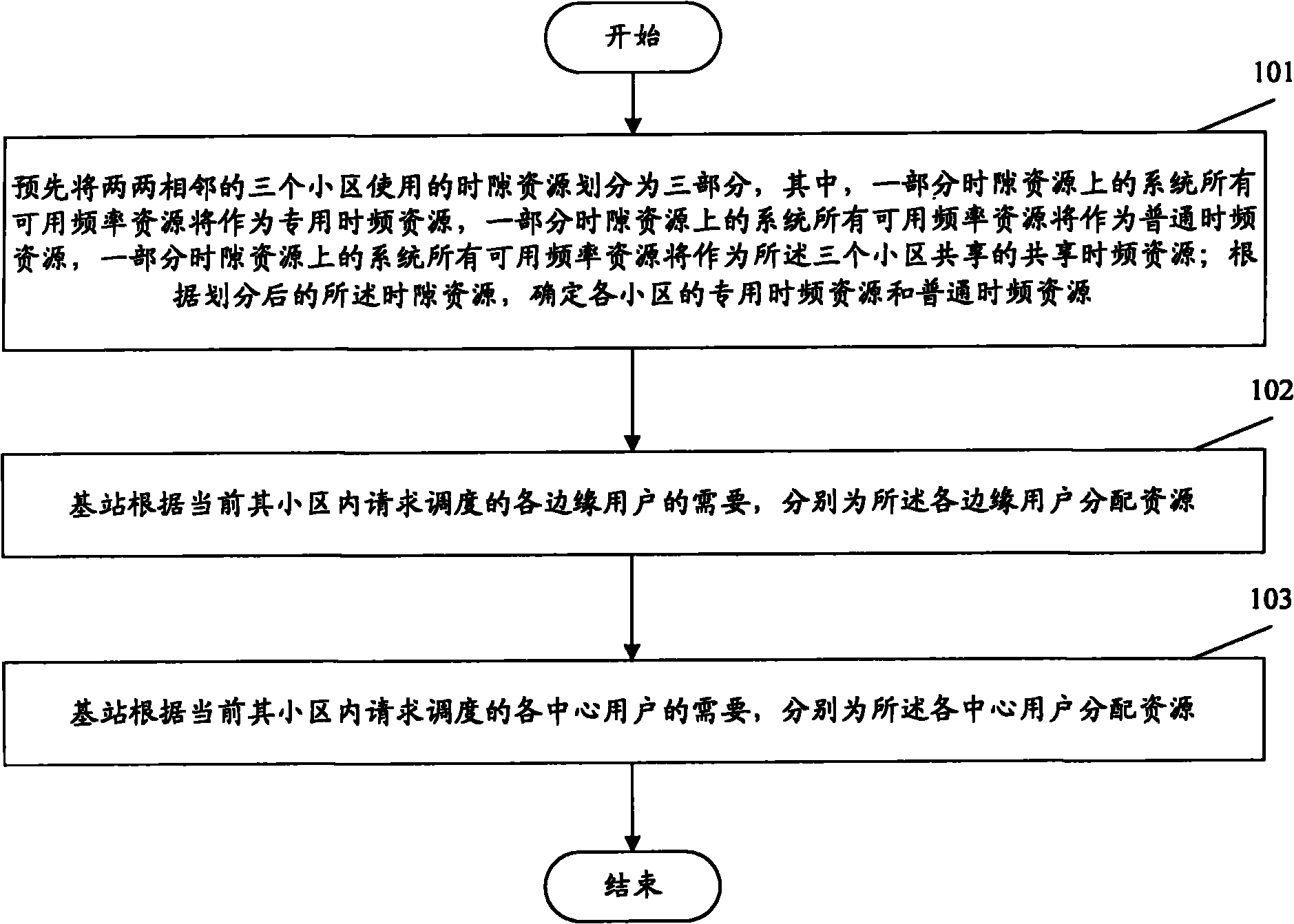Method for coordinating interference
An interference coordination, a part of the technology, applied in the field of interference coordination in the time division duplex mode, can solve the problems such as the interference coordination method of the TDD mode system that has not been proposed
- Summary
- Abstract
- Description
- Claims
- Application Information
AI Technical Summary
Problems solved by technology
Method used
Image
Examples
Embodiment 1
[0027] figure 1 It is the main flowchart of Embodiment 1 of the present invention, such as figure 1 As shown, Embodiment 1 mainly includes:
[0028] Step 101, pre-divide the time slot resources used by two adjacent three cells into three parts, wherein, all available frequency resources of the system on a part of the time slot resources will be used as dedicated time-frequency resources, and the system frequency resources on a part of the time slot resources All available frequency resources will be used as common time-frequency resources, and all available frequency resources of the system on a part of time slot resources will be used as shared time-frequency resources shared by the three cells; according to the divided time slot resources, determine the Dedicated time-frequency resources and common time-frequency resources.
[0029] What needs to be explained here is that in the existing network model, the number of cells that can be adjacent to each other is three. Theref...
PUM
 Login to View More
Login to View More Abstract
Description
Claims
Application Information
 Login to View More
Login to View More - R&D
- Intellectual Property
- Life Sciences
- Materials
- Tech Scout
- Unparalleled Data Quality
- Higher Quality Content
- 60% Fewer Hallucinations
Browse by: Latest US Patents, China's latest patents, Technical Efficacy Thesaurus, Application Domain, Technology Topic, Popular Technical Reports.
© 2025 PatSnap. All rights reserved.Legal|Privacy policy|Modern Slavery Act Transparency Statement|Sitemap|About US| Contact US: help@patsnap.com


